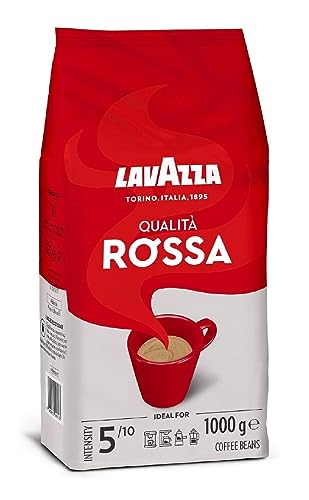The Benefits and Side Effects of Coffee Beans
Coffee beans are packed with health benefits. They can boost cognitive function and lower the risk of heart disease. However, too much coffee can cause adverse effects, such as anxiety and sleep issues.
The taste of coffee can be affected by the soil as well as the elevation and cultivation methods. The species of the plant also affects the taste.
Origin
The seeds of the tropical evergreen shrub that produces coffee beans are known as coffee beans. The beans are roasted then ground into the most popular coffee beverage around the globe. light roast coffee beans is the third most popular beverage in the world and is among the most lucrative international commodities. It is well-known for its energy-boosting effects caused by the alkaloid caffeine.
The most well-known story of the coffee's beginnings is that of an Abyssinian goat herder called Kaldi who observed his animals becoming energetic after eating berries from certain plants. He tried the berries himself and found them stimulant, so he set about cultivating the plant and making coffee.
In the 16th Century coffee was introduced eastwards to the Arabian Peninsula where it was grown on the Yemeni peninsula. The first coffee houses established. These meeting places were diametrically opposed to the taverns of Europe and focused on deep discussion and fast-paced thinking.
The majority of the coffee that is produced today comes from two different varieties of plants, called Arabica and Robusta. They thrive in the Bean Belt region, which is a band of land that lies between the Tropic of Cancer & Capricorn.
Types
There are many different types of coffee beans, and each is distinct in its flavor profile. The region where beans are grown may also have an impact on their flavor. Ethiopian coffee, for instance is famous for its citrus and floral notes and citrus notes, whereas Colombian beans have a full-bodied acidity and a balanced acidity.
Certain coffee beans are processed in order to enhance their flavor. Some beans are dried, roasted and then ground. Others are frozen and then ground later. Depulping involves polishing the beans to remove the silvery skin. The beans are later sorted and rated according to weight and size, with any defects are removed by hand or through a machines.
In contrast to the Arabica plant, Robusta plants can grow at lower altitudes, and are more resistant to pests. They also have more caffeine than Arabica beans, and they are used primarily in blends or instant coffees. A growing number of coffee drinkers are discovering the unique flavor and high quality single origin coffees.

Flavor
Coffee beans can be blended with a variety of flavors that add new dimensions to drink, dessert and food recipes. The best type of bean for a particular recipe will depend on the desired flavor profile and the way in which the recipe will be utilized.
The coffee bean is a seed that contains pollysaccharides and other sugars, proteins, lipids and minerals. The seed is covered by silverskin, which is removed during roasting. When the seeds are heated, they start a series of reactions that result in their aroma, flavor and color.
The coffee purists believe that natural flavors of coffee are the top-quality. It is possible to flavor roast coffee beans using artificial flavors. To enhance the flavor of a batch roaster, it sprays flavor-infused oil on the beans. The flavored oil is blended into the beans until it's evenly distributed. The beans are then cooled and ground prior to being packaged. The coffee beans that are flavored can be brewed into a cup of flavored coffee, or eaten as a snack without brewing.
Health benefits
Coffee beans are a great source of caffeine, a potent stimulant that can improve mood and boost energy levels. They also contain phenolic compounds which are antioxidants that shield cells from injury. These compounds have been linked to a reduced risk of heart cancer and other diseases, according to the National Institutes of Health.
The seeds of the coffee plant can be found in the cherries-like fruit. The fruit usually contains two seeds that are laid in a flat fashion against each other. Some fruits, however, have one seed, which is referred to as a peaberry. Peaberries produce a weaker and less flavorful cup of coffee.
Roasting coffee beans changes their flavor which makes them more pleasing to the palate. Roasting the beans makes them easier to digest by the body.
Coffee beans contain phenolic substances that inhibit glucose formation in the liver. They also lower cholesterol levels. They are also thought to lower the chance of developing non-alcoholic fatty liver disease and cirrhosis, and may even decrease the risk of gallstones. Coffee beans are a good source of potassium, riboflavin and B vitamins. They are also high in fiber.
Side effects
Coffee seeds are roasted, then made into a popular drink. The consumption of coffee is associated with a decreased chance of developing type 2 diabetes and liver diseases. The caffeine content in coffee can cause negative side effects like heartburn, jitters, as well as high blood pressure for some people. Green coffee bean extract is a caffeine-free substitute that has been proven to provide many of the same advantages as brewed coffee, but without the negative effects.
Coffee beans contain a wide range of volatile and nonvolatile chemicals which protect them from disease, insects and oxidation. These chemicals also contribute to their flavor. Nonvolatile substances create an oily layer on the coffee beans. This coating helps keep the beans hydrated and stops insects from eating the beans.
The fatty acids found in coffee beans are converted into energy when the beans are cooked. This energy can improve mental performance. It also aids in the release of adrenaline, which is a hormone that prepares the body for physical exercise. The chlorogenic acid in green coffee beans can also reduce fat absorption, and slow the release of sugar from the digestive system.
